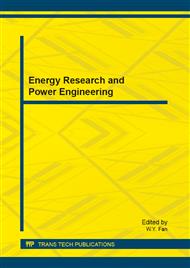p.42
p.49
p.54
p.59
p.64
p.69
p.74
p.79
p.83
Luminescent and Photocatalytic Properties of BaCoF4: Ce3+ Synthesized by Reflux Method
Abstract:
The complex fluorides BaCoF4 and BaCoF4: Ce3+ were synthesized by reflux method in ethylene glycol and characterized by means of XRD, TEM, XPS, UV-VIS and Fluorescence Spectrophotometer. In addition, the photocatalytic degradation property of BaCoF4: Ce3+ was investigated. The results indicated that the mean particle diameter of BaCoF4 was 54.6 nm. Only adsorption oxygen (α oxygen) existed on the surface of BaCoF4 and the content of surface oxygen was 5%. The BaCoF4: Ce3+ had a stronger absorption at 250 nm, which could be explained by d electronic transition of Ce3+. The maximum emission peak of BaCoF4: Ce3+ was 361.8 nm in its luminescent spectrum, and emission band of Ce3+ belonged to 5d4f transition. Meanwhile, the degradation rate of acid red 3B by BaCoF4: Ce3+ reached 98.7% after being lightened for 2 h by a 450 W high pressure mercury lamp.
Info:
Periodical:
Pages:
64-68
Citation:
Online since:
July 2013
Authors:
Price:
Сopyright:
© 2013 Trans Tech Publications Ltd. All Rights Reserved
Share:
Citation:


